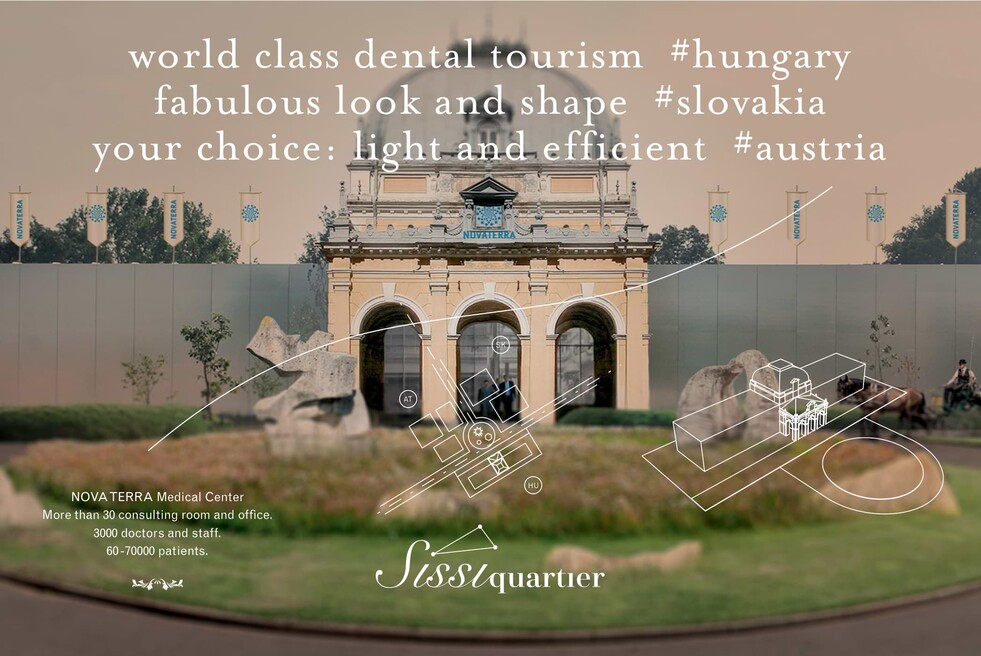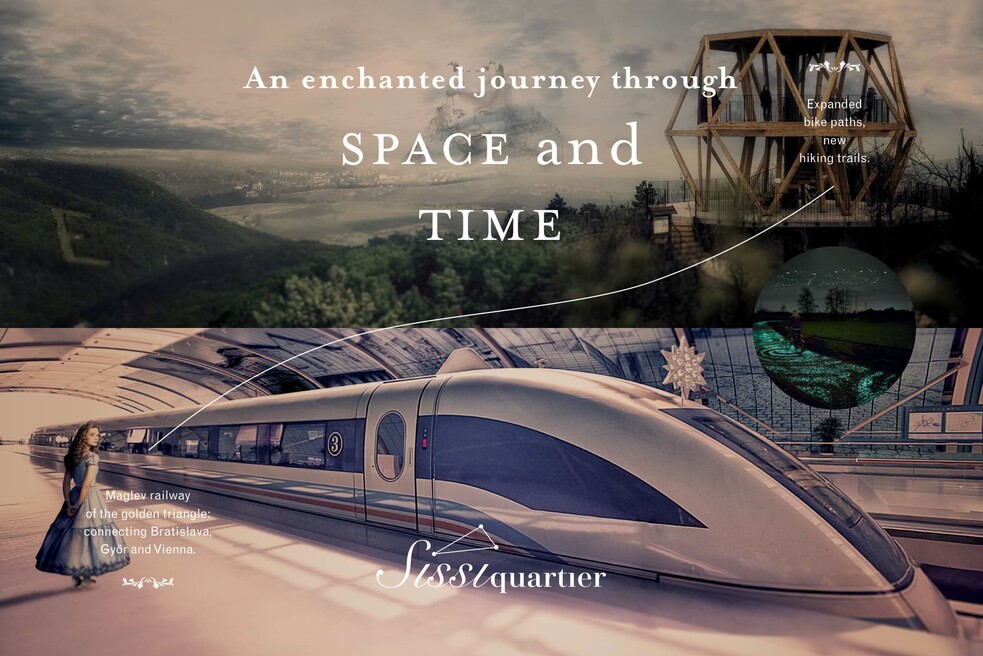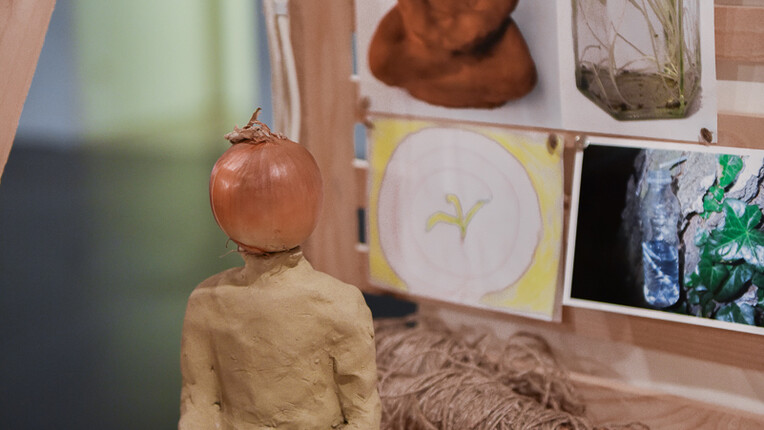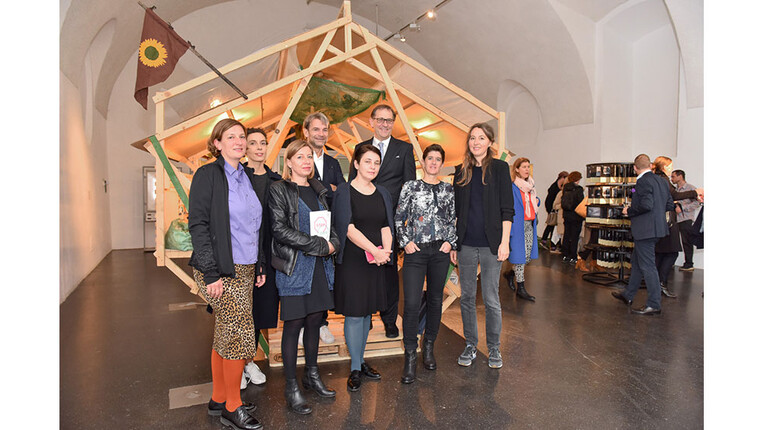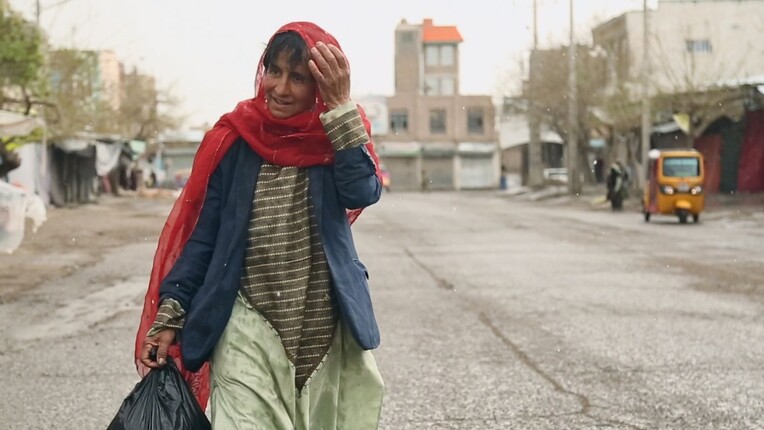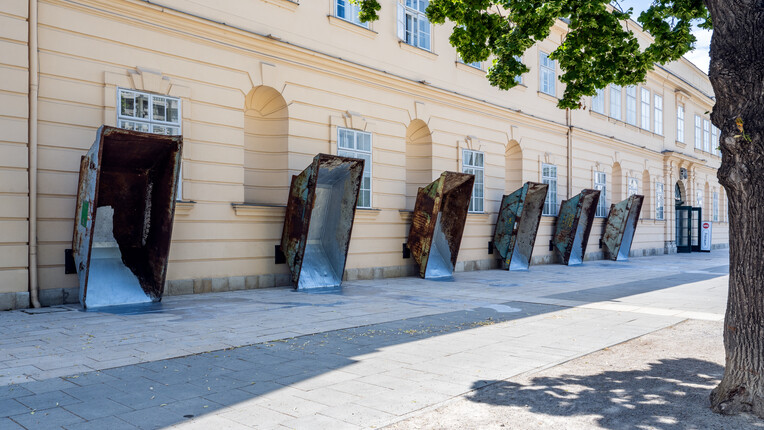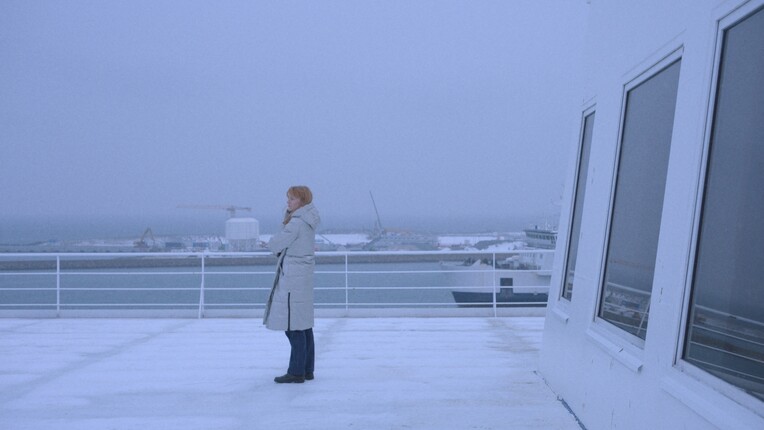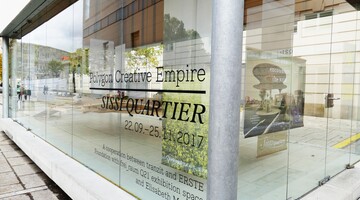
Polygon Creative Empire: Sissi Quartier
Sissi Quartier is a fictitious property investment plan by Polygon Creative Empire. It examines the kind of cultural and social components required to artificially construct a region.
Sissi Quartier is a fictitious property investment plan by Polygon Creative Empire. It examines the kind of cultural and social components required to artificially construct a region.
Curator Dóra Hegyi talked to members of Polygon Creative Empire (Orsolya Bajusz, Virág Bogyó, Kinga Lendeczki and Ágnes Patakfalvi-Czirják) when the project Sissi Quartier was realized at MQ ART BOX, in the courtyard of MuseumsQuartier Wien, as part of the exhibition “Stopover. Ways of Temporary Exchange” at the frei_raum Q21 exhibition space.
Dóra Hegyi: Polygon Creative Empire, when you were developing the project Sissi Quartier for the Q21/MuseumsQuartier, you formulated questions concerning how the image of a place is produced, represented and narrated, and at the same time interconnected with economic developments. What were your considerations?
Polygon Creative Empire: We have attempted to examine the kind of cultural and social components that should be fundamental in the design and planning of a region. Our imagined region is in no way a balanced outcome of straightforward progress from historical antecedents. The two dominant factors in its creation are international market and investor capital. Local traditions are treated as a resource, but only as colorful and tempting decorations, a kind of window dressing for mega capital. Both local tradition and imperial memory are emphasized in the construction of the region, but the new entity loses direct connection with the lived experience of locals. The newly-created world establishes a new context, focusing mainly on services for those passing through. When constructing this fictional region, we focused on areas having only employees, workers and other non-residents, and accordingly, we planned buildings that are designed for entertainment, travel and health tourism.
How did the location – Vienna – influence your ideas? In the project Stopover – Ways of Temporary Exchange, we organizers reflected on Vienna’s position as a historical gateway between East and West, a center of the former Austro-Hungarian Empire, which has also been a melting pot of nations for centuries. Even today it is an economic center with interests in the region.
In Eastern Europe, memory politics is a matter of competing nationalisms, but as we experienced in Vienna, the frontiers and contrasts tend to be hidden behind an aesthetically-designed surface. At some points in our lives, as is common among people in Central and Eastern Europe, we have somehow equated Vienna and Austria in general with democracy and the West. It took us a difficult process of reflecting and learning to realize that the ‘enlightened West’ as we imagined it is a castle in the air. We are indeed one region – with similar inequalities, cultural differences and social problems – fences and exclusion practices. It is an area where the West-East dichotomy is going to be perpetuated through very subtle references and gestures, and that is precisely where large finances are at stake.
The Sissi Quartier is intended to have a neutralizing, equilibrium-creating role, transforming the culturally, historically defined frontiers into a wider border zone. Sissi is as important for us as for any chocolate manufacturer.
We think that the project has come up with quite important findings relevant to the (re)learning of Vienna while implementing and observing the outcome of our project’s core element: imitation of the language and logic of investment firms.
Why was the Vienna-Győr-Bratislava “golden triangle” chosen as an investment area? What might this border region represent?
Until 1918, this area was part of a multiethnic empire and itself the home of several different groups and ethnicities. It also constituted an economic – and partly a political – unit, the meeting of Cis- and Transleithania. It lay along the Danube between the political and economic centers of Vienna and Budapest, in the immediate vicinity of the imperial capital. It was also – and still is – a kind of frontier: for Westerners, the exotic “Eastern Europe” and even the “Balkans” begin here. Here, the “civilized West” and the continuous German-speaking area ends, and the East begins. The territory was turned into a frontier area by small states with their own national ambitions. National integration has overshadowed neighborly relations, local economies and traditions. Many regions have virtually disappeared, ‘melting’ into nation states. In this way, the diversity and the respective memories of Bratislava, Vienna and other Central and Eastern European cities have been transformed into an appropriated national narrative, and local identity has re-emerged as national identity. From the project’s perspective, it was important to choose a small area that is still at the juncture of three countries, in order to expose how the same issues merit different solutions. The frontier region is also the result of the blurring of the boundaries in the EU, a kind of twilight zone. We explore this further, specifically referring to the semi-illegal activities happening in the area: prostitution (motel), money laundering, gambling (horse races), and the political and social embeddedness of local health protocols (medical center).
How is the labor market connected to the investment?
The division of labor within our region is as expected: due to Slovak and Austrian real estate prices and taxes, it is most profitable to purchase a home in Hungary. Service industry standards are as high in Slovakia as in Austria, but wages are generally higher in Austria, and so many people commute daily.
Why did you choose the figure of Empress Sissi for branding? The wife of Franz Joseph is in Hungary obviously romanticized and connected with schaumig renovated castles and the fake notion of the good old times of the Austro-Hungarian monarchy, when Hungary was part of the ruling empire. Sissi has a similar, artificially-maintained cult in Austria, and certainly has touristic value.
We did not invoke Sissi as a historical figure. It is the pop-culture “Sissi” of the media who is the representative of our brand. She is the symbol of the idealized fin de siécle, the golden age as it lives on in the collective memory of the region, and with her smoothness, blandness, and kindness she is the perfect metaphor of the homogenizing effect of capital.
In our imagined region, she is omnipresent, her memory lingers on – a racecourse is adorned with her personal photos, her face is carved into a rock, and she is the pin-up model featured on top of a nightclub. She is not only a symbol, but a theme – the demands of capital produce ‘smooth space’, and its smoothness is explicitly represented by Sissi and all the pastel and vanilla she stands for in the popular imagination. The neuralgic points in the area are given a Sissi makeover.
On the other hand, the idealized memory of this past has a Disneyland quality, and is an example of how collective memory can be politically manipulated.
Can you describe the buildings/sites/institutions this logic led you to create?
Our starting point were real sites connected to real locations, for which we planned the typical features of an investment on such a scale.
The sites have a dual function. As buildings, following investors’ logic, they are service centers that facilitate movement (e.g. highway supply hubs) and serve travelers’ needs. As concepts, they highlight issues that appear in the grey border zone (money laundering, sex tourism, health tourism).
We planned magnetic levitation trams to merge the core triangle of Wien, Bratislava, Győr. Wien would be the central hub in the mapping of the infrastructure. The economic center cements itself as the hub of incoming and outgoing connections. To make this explicit, the Vienna station would display engravings of the genealogy of local railway stations: Dunajská Streda, Wien Südbanhof, Bratislava, Győr, Hegyeshalom.
Our region’s flagship entertainment complex is a horse-racing complex. Besides the representative functions of Sissi’s favorite sport (horses have high value, horse power is ‘slow’ and ‘natural’, such sport has high class connotations), the race itself is a spectacle for those who attend and a gambling opportunity for others, who congregate in betting shops instead of the grandstands.
The Nova Terra Medical Center is directly at the intersection of the three countries’ borders, providing the opportunity to pick and mix healthcare legislation according to each need and each service. The texts displayed on the banners refer to the respective positions of these countries in healthcare tourism. Hungary provides dental care, Slovakia cheap and reliable plastic surgery, and Austria no-frills, non-invasive medical abortion, which is not yet available in either Slovakia or Hungary.
The medical center incorporates the Rajka Sculpture Park in a central roundabout linking roads to various parts of the building complex. Comprising abstract grey slabs, reminiscent of either a wall, or barbed wire, the Rajka sculptures symbolize open doors and the devices that close them.
Other kinds of capital flows are the motels, casinos and night clubs on the eastern side; shady businesses commonly being located next to international trade routes. Sex trafficking is a serious issue in Eastern Europe, but prostitution and the sex industry is increasingly whitewashed as sex ‘work’, something that is chosen, the ‘oldest profession’. So instead of the reality of women trafficked westwards, we promote light entertainment with the neon signs of Motel Princessin – a smiling pink pinup Sissi, and Kreuzer Casino.
After her death, Sissi (as Elisabeth, serious and orderly) was commemorated with a letter ‘E’ on a hill slope by Banska Stiavnica, made up of larches planted among deciduous trees. We took over this image and the letter ‘E’ became part of the visualization on one of our banners.
Can you mention the people who had an important role in the realization of the project?
First of all, we would like to thank Ms. Elisabeth Melichar for the opportunity to exhibit in the ArtBox. We are grateful for the team of Q21 and tranzit, for woodwork and scale models to Fanni Hegedűs, Zoltán Kalászi for visualization and architectural rendering and to Krisztián Kristóf for 3D visualization.
Do you plan a continuation of the project? Could this idea be developed further?
Yes. We would like to present it on the other vertices of the Golden Triangle, namely Győr and Bratislava. We quite fancy the idea of involving “the” mega capital (maybe Russian or Chinese investors) and building a Sissi Region for real. Let’s see where Europe begins in thirty years’ time!
SISSI QUARTIER
as part of the exhibition “Stopover – Ways of Temporary Exchange”
Date: thru Nov 25, 2017
Location: MQ ART BOX, MQ main courtyard
#stopover
www.Q21.at
